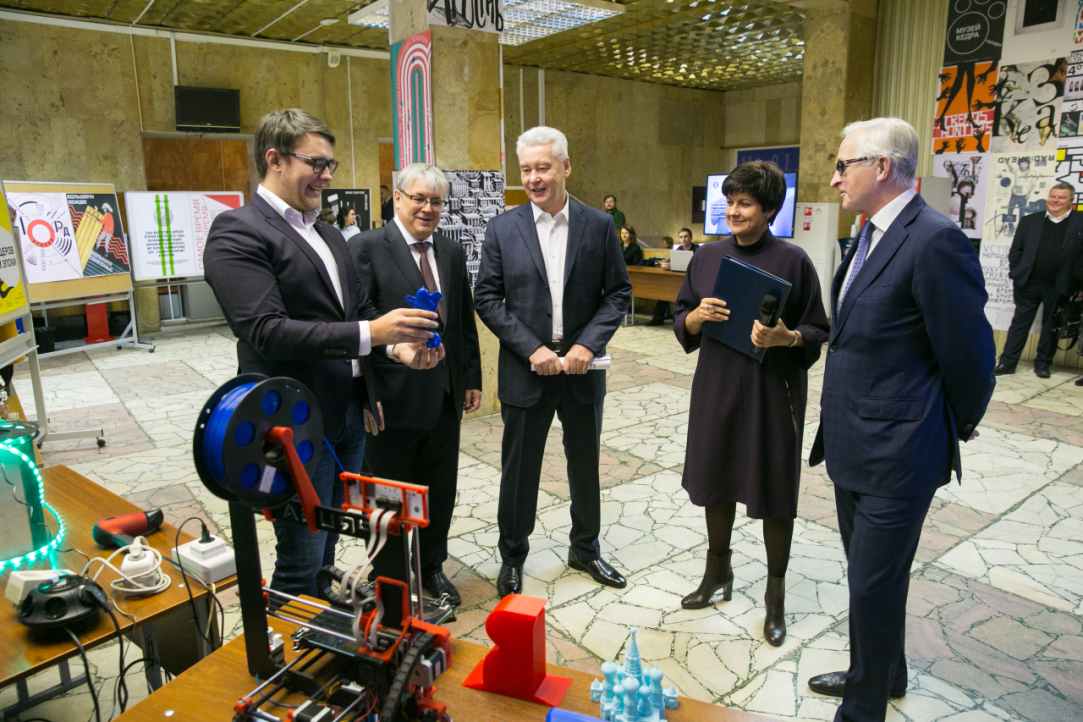HSE’s Projects for the City

Staff from the Design Laboratory (the design wing of the HSE School of Design) teamed up with design students to carry out an extensive study on the territorial branding of Moscow’s various districts. In addition, undergraduate and graduate students of HSE MIEM developed ‘smart systems’ for monitoring urban space and managing energy consumption and lighting systems. The projects were presented to Moscow Mayor Sergey Sobyanin during his most recent visit to the Higher School of Economics.
The purpose of territorial branding is not only to identify the residents and participants in urban communities territorially at the emotional and visual level, but also to bring order to urban space as a whole. During the research, it was important for the designers to find elements that help bring together solutions for various regions into a single system, while at the same time highlighting the special characteristics of each region and present them as a unique part of a single space in the capital.
The authors of the study focused on four districts in Moscow: Basmanny, Krasnoselsky, Meschansky, and Sokolniki. They looked at previous instances of branding in Moscow, identified the city’s key characteristics, determined which groups of regions were important to target, surveyed people, set the parameters for the regions’ identity, and ultimately identified the structural organisation of space and the visual realm in the city.
After turning to our sociologist colleagues and through them organising meetings with city residents, ethnographers, and district activists, we understood that there is a large demand for design that emphasises the districts’ individuality
The designers identified four larger groups of objects and items with their own style: ‘Navigation and Reference Publications’ (maps, routes, guidebooks, information stands, and signs), ‘Souvenirs,’ ‘Culture and Leisure,’ and ‘Sites.’ The designers presented the results of their research to Moscow Mayor Sergey Sobyanin in a booklet called ‘Branding Moscow’s Districts’ during his visit to the Higher School of Economics on January 25.
‘At the school of design, we work a lot with territorial branding, and after looking around us there was a point when we noticed a huge field to work in. Moscow’s districts and regions are so very different, and each and every local can tell you a lot about their district. But at the same time the [districts] lack their own visual image, and there are no souvenirs – small things that emphasise the [districts’] appeal. After turning to our sociologist colleagues and through them organising meetings with city residents, ethnographers, and district activists, we understood that there is a large demand for design that emphasises the districts’ individuality. Each region has something unique – parks, sites, etc. – and there is a lot of competition among them. On the other hand, there are a lot of tools that help make local history better known. We have developed brand books for four of Moscow’s districts, and we’d like for our solutions not to remain just ideas. We are ready to present them to you and hope that, with your support, these solutions will be implemented,’ fourth-year School of Design student Anna Kosheleva told the mayor.
Sergey Sobyanin reacted favourably to the researchers’ work and said that it should be of interest to the deputies.
Also presented during the mayor’s visit were developments made by undergraduate and graduate students of HSE MIEM.
This included an intelligent residential lighting system called Smart Light, which allows you to fully control the lighting in your home with your smartphone. The system has around 65,000 settings (shades) that can be programmed depending on, for example, your mood or the time of day. The project is being carried out in HSE MIEM’s Telecommunication Technologies and Communication Systems Laboratory.
Another project HSE MIEM students are working on is called Smart Energy. This system, thought up in the Internet of Things Laboratory, allows you keep track of energy consumption at home and in manufacturing on a device-by-device basis. Special devices have been developed that allow for energy statistics to be compiled, which allows for an energy saving plan to be created. Lastly, the electrical supply going to various devices can be controlled remotely using wireless networks.
The robotics laboratory presented a project entitled ‘Smart Robotics for Urban Spaces.’ A remote-controlled robot can be used to monitor parks and water areas, while an android named Darwin can be used in fields such as education or, for example, in special ‘robot shows’ for children.
A project that involved texturing small and large architectural forms with fractal images was of particular interest to Mayor Sobyanin. MIEM specialists are ready to use fractals to develop design layouts for creating a ‘fractal metro’ at new subway stops, bright building facades (churches, buildings, or subway stops), fractal stained glass (subway stops or windows), fractal panels, and murals for the interior of subway stations. Professor Nadejda Trubochkina is leading the project within the fractal art centre at HSE MIEM’s 3D Visualization and Computer Graphics Laboratory.